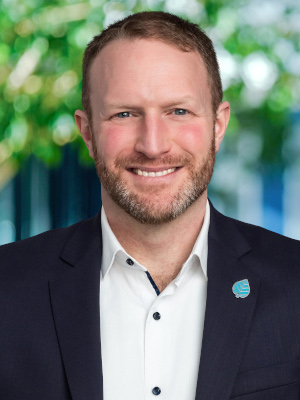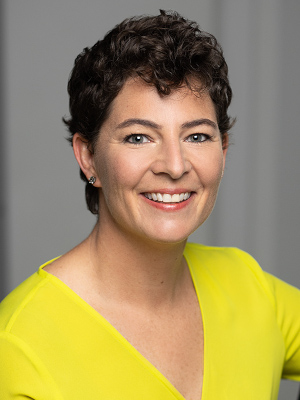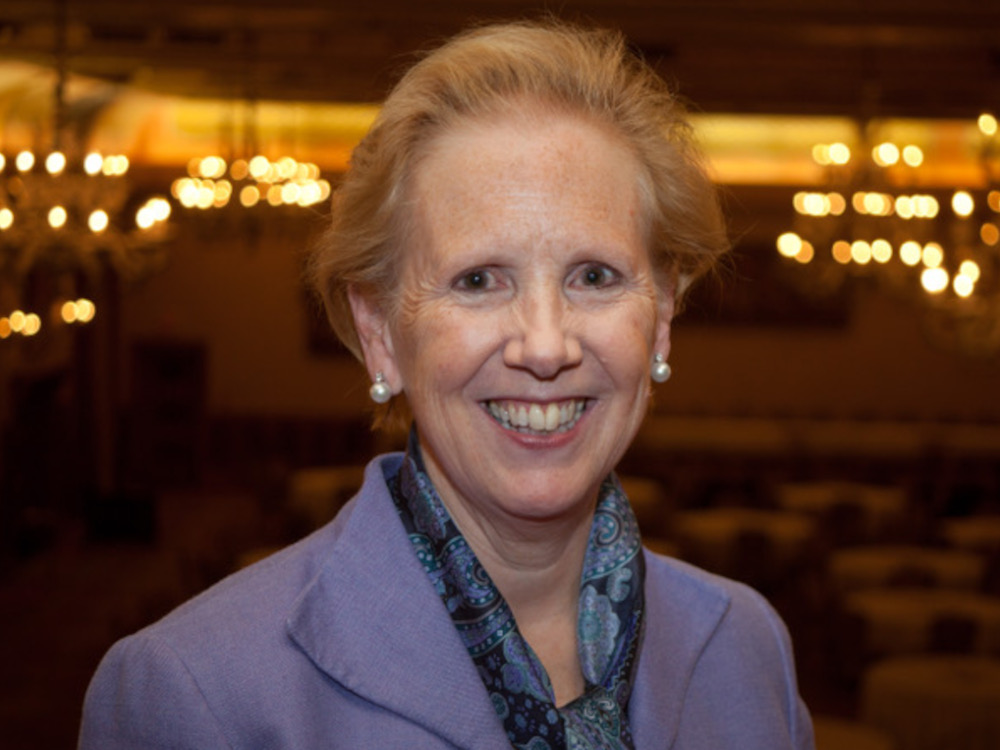Last month, the Brian and Joannah Lawson Family Foundation donated $60 million to the University of Toronto to establish a research institute that will address the climate crisis. It was the largest gift to a Canadian university to help fight climate change, and part of the Clean Economy Fund’s “Climate Champions” philanthropic campaign.
Since the fund’s launch in November of 2024, when nine Canadian families and foundations pledged $405 million over the next 10 years to help Canada transition to a low-carbon economy, the campaign has built the kind of momentum that fund CEO Eric Campbell hoped for—and faster than he’d imagined.

“Climate Champions has now generated $481 million, a big shot in the arm for the climate work happening in Canada,” says Campbell. “Philanthropy can motivate and trigger broader ambition and government and private sector action that is fundamental to achieving our climate goals. That’s what we’re excited about seeing over the next few years.”
It’s a big ask. Last year, the Clean Economy Fund released an analysis of climate giving in Canada. The finding? Only 0.9 per cent ($106 million) of philanthropy in Canada was directed to climate specifically. This is well below the global average of 1.6 per cent and peers such as the United States, where 2.2 per cent of philanthropic dollars go to climate, and the U.K., which donates 6 per cent.
Environmental causes more broadly receive 2 per cent of philanthropic support in Canada. This includes work focused on conservation and climate change mitigation.
“That 2 per cent has stayed fairly constant from 2000 to 2021,” says Devika Shah, executive director of Environment Funders Canada, a network of philanthropic, government and corporate environmental funders focused on addressing climate and biodiversity crises.
“During the years of the Harper government, philanthropic support for the environment went as high as 8 per cent, likely as a response to what was perceived as a lack of support for environmental action,” Shah added. “But then it dropped back down once the government changed.”
The Trump effect
The San Francisco-based ClimateWorks Foundation saw a similar uptick in climate philanthropy in the U.S. during President Donald Trump’s first term, says Campbell. “That suggests that when governments drop the ball, philanthropy does step up.”

It’s happening again. Bloomberg Philanthropies pledged to uphold U.S. commitments to international climate agreements after the current Trump administration’s withdrawal and slashing of environmental protection budgets.
The same can’t be said for investors, at least those outside Canada. Morningstar DBRS reports President Trump’s anti-environmental, social and governance (ESG) policies, coupled with a backlash to impact investing more broadly, have led to U.S. and global investors pulling US$8.6 billion out of sustainable funds in the first three months of the year.
Here in Canada, even though several of the country’s largest banks very publicly left the Net-Zero Banking Alliance, and RBC recently stated it would drop its sustainable finance goals, Canada recorded positive flows of US$285 million into sustainable funds during the same period.
The private and longer-term investing side of Canada’s estimated $15 to $20 billion impact investing market—private equity, private debt, venture capital—remains stable, says Kelly Gauthier, president of Toronto-based Rally Assets, an impact investment management firm. “We haven’t seen any flight of capital. If anything it has created deeper conviction.”
Where philanthropy dollars go in Canada
CanadaHelps.org, Canada’s largest online platform for charitable giving and fundraising, raises about $500 million a year. In its 2024 Giving Report, it found that only 1.5 per cent of those donations were directed to environmental charities, compared to the top three categories: health (22 per cent), local and regional causes (22 per cent) and education-based charities (15 per cent).
Climate giving has been fairly consistent over the past five years, with a slight uptick in 2024.
According to Philanthropic Foundations Canada’s (PFC) 2024 Landscape Report, Canadian foundations (public and private) gave 4 per cent to environmental causes. This compares to 32 per cent to education research, 16 per cent to health and 11 per cent to social services.
PFC recently held a roundtable with its members who are also signatories of the Canadian Philanthropy Commitment on Climate Change to find out what was top of mind, says André Pawan Vashist, director for learning and collaboration.
“People are focused on climate mitigation and the role they can play in helping the transition to renewable energy. They are connecting food insecurity and health to climate action. They want equity, justice and Indigenous communities to be part of the conversation around climate action,” he says.
Climate action does not match climate concern
Research shows that nearly 70 per cent of Canadians believe climate change is a major crisis. But that’s not translating into giving, says Julie Fiorini, general manager of donor services at CanadaHelps.
Why? One reason might be tied to how optimistic Canadians are about the country’s future. “Our research shows 18 per cent of people who are very hopeful have donated to environmental organizations, compared to 1 per cent who feel hopeless about the future,” says Fiorini.
Shah says climate is a collective problem that requires collective action. “It’s easy to think, ‘What’s my contribution going to achieve?’ But it’s for that reason every contribution matters even more.”
For Campbell, of the Clean Economy Fund, one of the biggest barriers to climate giving is the complexity of the ecosystem—the multiple ways climate impacts our lives, and all the potential recipients reflecting different angles of the climate challenge. In other words, where to give isn’t obvious.
As well, the results often aren’t tangible, says Shah. “Climate solutions are not one-offs. They all have to fit together in a holistic, integrated way to shift entire systems: the way capital flows, the way humans behave, the metrics for what a healthy economy looks like,” she says.
Climate feels abstract, notes Gauthier. “When there are lots of problems to solve and scarcity of resources to do so, people will orient to causes that feel more local and tangible to them: supporting youth, a women’s shelter, breakfast programs,” she says.
Hope for the future
Individuals and foundations already giving to climate solutions are recognizing the urgency and unlocking more of their own capital, which is what the Climate Champions are doing.
At the same time, “a new generation of wealth is emerging—millennials and Gen X-ers who have had success and are finding themselves in a position to do something,” says Campbell. “We have seen an uptick in giving from those generations to our work.”

Both Shah and Gauthier are seeing a similar trend among their members and clients where the younger generation is stepping into leadership roles within family foundations, finding their voice and focusing on the issues that matter to them the most.
“They are more concerned about environmental work in general and climate change in particular than previous generations,” says Shah.
This was the case for Geoff Burt, CEO of the Consecon Foundation, which works with Canadian charities to solve major climate and biodiversity challenges.
When his investor-philanthropist father, William Burt, died, and a new generation of trustees took the helm, they shifted from literacy grant making to environmental grant making in 2017, the same year Geoff Burt’s daughter was born.
“My wife, who also works at the foundation, and I felt this personal connection to the environment, and what the world is going to be like,” he says. “That definitely influenced us.”
Consecon Foundation invests in technologies to develop alternative food proteins and remove carbon from the atmosphere. Inspired by the original Climate Champions announcement in November, Burt joined the Lawton Foundation as a Climate Champion, committing $3 million to the campaign. The money will largely support research into nuclear energy. “Our thinking is there will be large investments in infrastructure in this space,” Burt adds. “We are modeling where nuclear energy can fit into the overall energy mix, and what the risks might be to help demonstrate the best path forward to maximize impact and make sure these projects have the best chance to succeed.”
The Canadian Family Offices newsletter comes out on Sundays and Wednesdays. If you are interested in stories about Canadian enterprising families, family offices and the professionals who work with them, but like your content aggregated, you can sign up for our free newsletter here.
Please visit here to see information about our standards of journalistic excellence.




